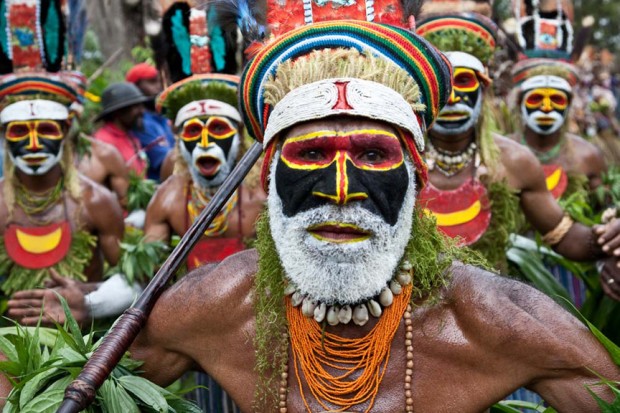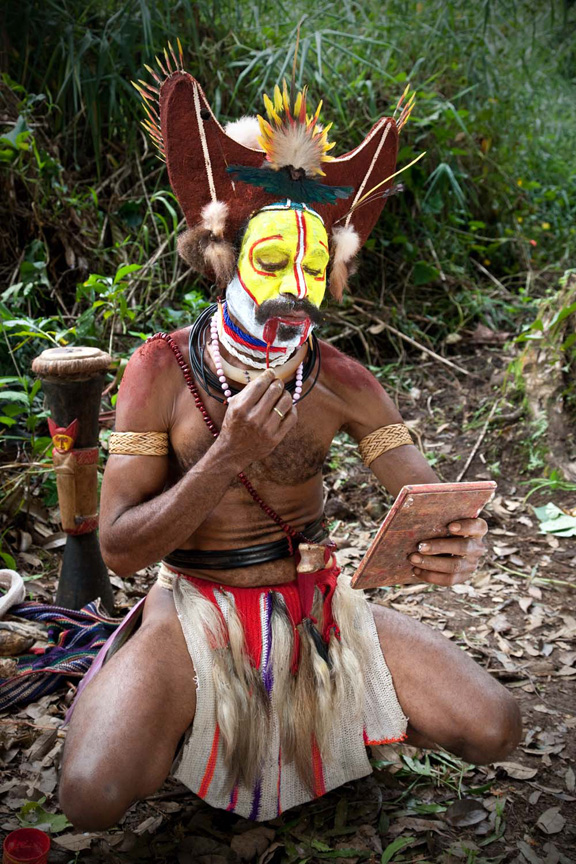First off, I want to thank my good friends Scott and Brad for having me back as a guest blogger. It's always fun, and an honor, to here. What's more, I enjoy and learn from the feedback in the Comments section - even when someone disagrees with me.
I’m often asked, “What’s your specialty?” I reply: “”My specialty is not specializing.”
You see, I try to do it all. And, I encourage young photographers not to specialize – because being good at many aspects of photography is often better than being good at just one. Plus, what you learn in one area of photography can often be applied to another.
That said, when it comes down to it, I like travel photography the most. Diving a little deeper into that specialty, I get the most joy from photographing people, especially strangers in strange lands.
I also thrive on the challenge of getting people to accept me and trust me enough to let me into their lives for a few seconds or minutes to make a picture. That's the key when it comes to people photography.
In this guest post I'd like to share some of my favorite people pictures (click the picture for a larger view) from a workshop that I lead to Papua New Guinea. Talk about strange places and strangers in strange lands!
I'll also share my top 10 tips for making people pictures - tips that you can apply to all your people pictures . . . even when you are photographing "strange" friends and family members. ☺
1) Make a portrait and an environmental portrait (a subject in his or her environment)
Above is an example of an environmental portrait. The last picture is this post is a head-and-shoulder portrait.
2) When you think you are close, get closer
The closer you are to the subject, the more intimate the picture becomes. My favorite portrait lens is the Canon 24-105mm IS lens. Here I used that lens set at 45mm.
3) Master fill-flash
My goal when I take a flash picture is not to have it look like a boring flash shot. The key to achieving that goal is to balance the light from the flash to the available light. Here's an article I wrote for Layers magazine on that topic.
4) Compose carefully
Composition is the strongest way of seeing, which is the topic of my newest, and most popular, class on Kelby Training.
A simply and effective composition technique is to place the subject off center. That's a technical composition tip. What's more important is to compose emotionally - and to capture the mood of the scene.
5) Light the eyes
Ya gotta light the eyes. You can do that with a speedlite (as in this case), a reflector (as in photo/tip #8) or by having the subject look up toward the sky (as in photo/tip #4).
6) See eye-to-eye, or not
When you see eye-to-eye and shoot eye-to-eye with your subject, the viewer of your photograph relates most to the subject. Shooting below eye levels gives the subject a sense of power. Shooting down can look boring.
7) Consider depth of field
In travel portraiture, depth of field is important. I shoot all my travel portraits on the Av mode. Here I used a small aperture for good depth of field.
8) Focus carefully
Just because you have an autofocus camera, that does not mean the camera knows where to focus. Usually, it's best to focus on the eye, especially when you are shooting with a telephoto lens and when there are foreground elements in the scene.
9) Enhance your pictures in Lightroom and Photoshop
Use the Vignette feature to draw more attention to the subject by darkening the edges. Also: selectively sharpen the subject; selectively blur the background. Always think selectively.
10) Crop creatively
Cropping (post-capture composing) is often needed to make a good photograph. Sometimes, you simply can't get it right in-camera. That's why the first thing I do when I open an image is to crop it.
Well, that's it for now. I hope to see you all back here or at Photoshop World someday. Until then, if you'd like more people photography tips, check out my flagship app, Rick Sammon's 24/7 Photo Buffet.
——————–
You can see more of Rick’s work and get daily tips, tricks, and techniques at RickSammon.info, keep up with him on Google+, and stay tuned for his reality show, Exposure.















#9’s point about sharpening selectively is something I definitely need to explore more. Thanks for sharing Rick, these images are fantastic!
Rick, glad to see you here! I love your sayings, I borrow them all the time! For anyone who doesn’t know Rick and Juan Pons has an awesome podcast called The Digital Photo Experience, great listening! You are one of my favorite teacher/photographers.
KT
I love all the colors and composition in all the photos in this post but this is exceptional:Â http://www.joeyl.com/personal-galleries/portraits/
Very nice photos collection. I like the lighting very much. Thanks a lot for sharing !!
This just really spoke to me tonight… Im taking this with me, ”
A simply and effective composition technique is to place the subject off center. That’s a technical composition tip. What’s more important is to compose emotionally – and to capture the mood of the scene.”
Love your work and your tips Rick! Great listening, reading and watching you!!
Great write up that, very important tips as well. Thanks. Good tutorial in the layers magazine as well.
 What a nice way to wake up! Thank you all for the nice comments. And of course a big thank you to my friends Brad and Scott for having me as their guest once again.
Great post.
Thanks for the tips Rick, very useful; … some powerful faces!
Hi Rick,
Very good, tip-packed post. I’m curious about your advice not to specialize as it runs counter to the advice of many pros, including your blog host, Mr. Kelby. Is your “don’t specialize” advice directed more towards the amateur/serious amateur or to those looking to make a career in the business?
Cheers,
Trev J.
Rick,
This is off topic but I wondered what your opinion of Adobe’s new subscription plan for their software versus the traditional pay/upgrade path? Have you picked up a general consensus on what other photographers think about it?
Rick,
My experience is that there are pros and cons to specializing. A big pro is being the ‘Go to Guy’ when a client needs a particular look. Conversely, you could lose out on a gig, even though you’d be the perfect photographer, because the client thinks “Well, he just does (fill in the blank) and I need someone who can shoot (fill in something else).”
I whole heartedly agree that a photographer should push the envelope and try different types and styles of photography. Otherwise they take the chance of getting bored and stuck in a rut where all their photos look the same.
Trevor – My advise about not specializing to directed toward . . . anyone who wants to listen. :-). Yes, there are great fashion and food and so on photographers. But for many, being able shoot in many different situations is key to making money and getting jobs. For example, if I had specialized in HDR (I did a book and have an app), I would not have taken the people pictures in this post. If I had specialized in studio photography (book and app, too), I might have ventured from the safety of the studio to the wilds of Papua New Guinea.
It’s the same with investments: you can’t have all your eggs in one basket.
Thank you for your comment,
Rick
Robert Jenson – No consensus, but will post something and see what’s the reaction.
Thank you,
Rick
Is really nice to see you back posting more tips and spreading your philosophy Rick. Everytime I read one of your post, I can actually sense the voice of wisdom you have right in front of me. Love your work and your philosophy. Great seeing you again here in kelby’s blog.
Max – I’m glad you like my photo philosophies. I have a bunch. More to come.
Truly wonderful portraits,they are very moving and truly express the soul of the people. Thanks for sharing them.Â
I have heard the endless arguments for specializing and I agree there are advantages, however I have trouble not capturing anything that catches my interest. I love landscapes and people in their natural environment best, but if it’s interesting…..
Here is great Picasso quote you may find interesting:
“God is really only another artist. He invented the giraffe, the elephant and the cat. He has no real style, He just goes on trying other things.“
Tom,
I don’t think anybody that encourages specializing is suggesting that you can’t or shouldn’t take photos of anything that interests you. I think it’s more a case of only presenting your “specialty” work as your pubic image and to potential clients.
Tom Kostes…. Great quote!
Great series Rick and interesting story. I love the colors and tips!
Great post, tips and shots.Â